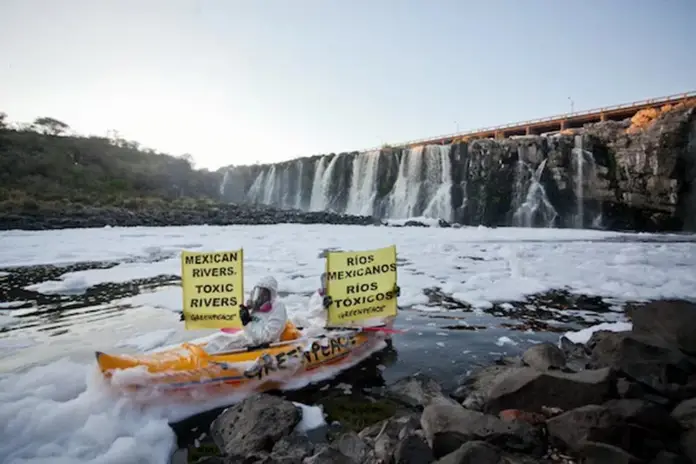:quality(85)/cloudfront-us-east-1.images.arcpublishing.com/infobae/SG3SSJ73MNAM7JYIMH63OQVMLQ.jpg)
The Lerma-Santiago River is one of the longest rivers in the entire country; it is part of the Lerma-Chapala-Santiago basin, and begins in the State of Mexico, where the Lerma River is located, and then flows into Lake Chapala; there begins the Santiago River, which runs 475 kilometers until it flows into the Pacific Ocean. Among its tributaries are the Verde, Juchipila, Huaynamota and Bolaños rivers; as well as the Zula.
This body of water runs through the State of Mexico, Querétaro, Guanajuato and Michoacán, until it reaches Jalisco, and from there it runs through Nayarit until it reaches the Pacific Ocean. Sadly, one of the greatest characteristics of this tributary is that it can be considered the most polluted river in the entire country.
In the last 50 years, the pollution of these torrents is due to industrial activity and excessive urban growth. Due to its high concentrations of pollutants, the waters of the Lerma River are often dyed black and give off strong hydrocarbon odors.
In addition, the population of the areas it passes through does not take much care of it either: waste of all kinds is continually thrown into the riverbed, as well as dead animals, debris, etc., not counting the discharge of waste water that is done without consideration.
It is estimated that to clean up the Lerma River around 14 billion pesos are needed, an amount that none of the last three federal governments has invested, according to the Lerma Chapala Basin Council.
For its part, the Santiago River, which is located in a highly industrialized area, receives discharges of toxic waste from some 250 industries and companies, as well as waste from pig farms and crops with agrochemicals that are found along its course.
The contamination of the river has caused serious health problems in the local population, including kidney disease and cancer. In this sense. The population of El Salto and Juanacatlán, municipalities of the Guadalajara Metropolitan Area, is the most exposed to river pollution.
The inhabitants of these communities have denounced the lack of action by state and federal authorities to clean up the river and address cases of illnesses related to pollution.
According to what was published in El Sol de Salamanca, the Lerma-Chapala Basin Council has considered reactivating the Comprehensive Sustainable Aquifer Management System (SIMS), a project that began in 2014 that seeks to rescue this riverbed, but due to the changes in the 2018 sexennium it was paralyzed.
Source: infobae




